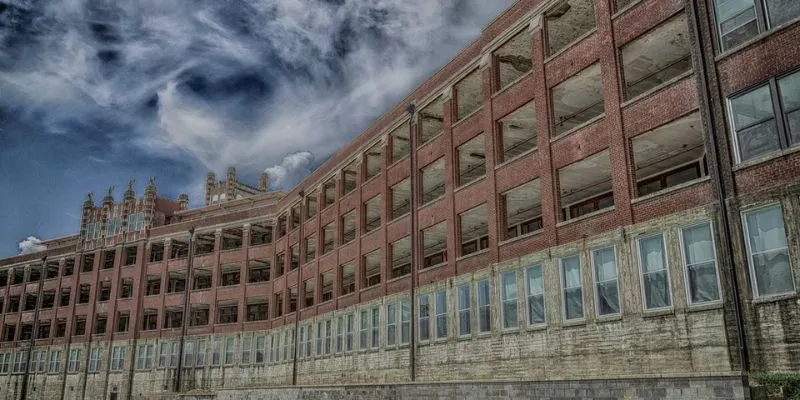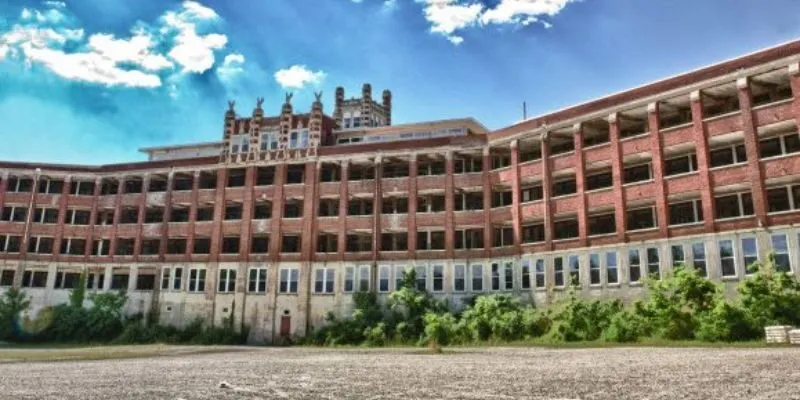Waverly Hills Sanatorium is one of the most infamous and eerie sites in the United States, with a dark and storied history that has made it a popular subject of ghost stories, paranormal investigations, and local legends. Situated in the rolling hills of Louisville, Kentucky, this abandoned sanatorium was originally constructed in 1926 as a tuberculosis hospital. It became a symbol of both medical progress and the profound human suffering caused by tuberculosis, as well as a focal point for tales of hauntings and mysterious occurrences.
The tale of Waverly Hills is as complex as it is chilling, with layers of medical history, tragedy, and supernatural intrigue.
The History of Waverly Hills Sanatorium
The story of Waverly Hills Sanatorium begins in the early 20th century, a time when tuberculosis (TB) was a deadly epidemic, claiming the lives of thousands. At the time, little was understood about the disease, and there were no effective treatments. People who were diagnosed with TB were often isolated from their families and sent to sanatoriums, where they could receive care, though the chances of survival were slim. Waverly Hills Sanatorium was built to address this need and to provide care for those afflicted by tuberculosis.

Designed as a state-of-the-art facility, Waverly Hills Sanatorium initially opened in 1926 with 40 rooms, and it expanded over time to accommodate hundreds of patients. The architectural design of the sanatorium, set on a 150-acre hilltop site, was intended to create an environment conducive to the healing of patients. The building was constructed with large windows to ensure that patients received plenty of natural light, and it had open-air porches and terraces to maximize ventilation, which was believed to help fight TB.
Despite the innovative design, tuberculosis was a deadly disease with few effective treatments at the time. Many patients were placed in isolation, and doctors resorted to experimental treatments, including the removal of infected lung tissue, a procedure known as a lobectomy. Unfortunately, this often proved fatal. Over the years, thousands of people died at Waverly Hills Sanatorium, and the number of deaths only grew as the facility became overcrowded.
The Tragic Legacy of Waverly Hills
As the death toll mounted, Waverly Hills became synonymous with suffering and despair. The most infamous feature of the sanatorium was its “death tunnel,” a long underground passageway that was used to transport deceased patients away from the public eye. The tunnel, often referred to as the “body chute,” is said to have been used to move the bodies of the deceased without alarming the remaining patients or visitors. This dark corridor became an essential part of the sanatorium’s operations, and over time, it developed an ominous reputation.
The body chute stretches for over 500 feet, connecting the main building of Waverly Hills to the bottom of the hill. It was designed to keep the deaths of patients as discreet as possible, as tuberculosis was feared and stigmatized at the time. Although it was originally constructed as a practical means of moving bodies, the tunnel has since become a symbol of the tragic and macabre history of Waverly Hills.
By the 1940s, advancements in medicine, including the development of antibiotics like streptomycin, significantly reduced the death rate from tuberculosis. As a result, the need for specialized tuberculosis sanatoriums began to decline. Waverly Hills Sanatorium closed its doors as a TB hospital in 1961, and the building was repurposed into a nursing home. However, it did not escape its dark legacy, and as the decades passed, rumors began to circulate about its haunting.
Waverly Hills Sanatorium and Its Reputation for Haunting
Since its closure, Waverly Hills has become one of the most well-known haunted locations in the United States. Paranormal enthusiasts, ghost hunters, and curious visitors are drawn to the site by its dark past and eerie reputation. Numerous reports of paranormal activity have been documented at the sanatorium, with many claiming to have encountered spirits or unexplained phenomena.
One of the most frequently reported sightings is that of shadowy figures and apparitions, often seen in the hallways and patient rooms. Visitors have reported hearing strange noises, such as footsteps, doors slamming, and the sound of someone coughing or crying. Some claim to have encountered ghostly figures in period clothing, believed to be the spirits of patients or staff members who never left the building. The most famous of these entities is said to be the spirit of a nurse who committed suicide at the sanatorium, though details surrounding this story remain unclear.

The Waverly Hills Sanatorium also draws attention for its ghostly presence in the death tunnel. Many paranormal investigators claim to have encountered strange feelings of coldness or unease when near the tunnel, and some believe that the spirits of those who died in the sanatorium still linger in the dark, subterranean passage. It is said that many visitors feel a heavy atmosphere when walking through the body chute, with some describing feelings of dread, nausea, or the sensation of being watched.
Other eerie events include the sighting of “The Creeper,” a shadowy figure that is said to crawl on walls and floors. Witnesses who have encountered this entity describe it as a dark, humanoid shape, often moving at an unnatural speed. Additionally, some claim to have captured strange images on cameras, including orbs, mist, and distorted figures.
Over the years, Waverly Hills has become a hotspot for paranormal investigations. It has been featured on several ghost-hunting television shows, such as Ghost Adventures, where the site’s spooky reputation has only grown. Visitors come from all over the world to explore the abandoned hospital, hoping to encounter spirits or capture photographic evidence of the supernatural.
The Future of Waverly Hills Sanatorium
Today, Waverly Hills Sanatorium stands as both a historical landmark and a center for paranormal exploration. The site is privately owned and has been preserved to some extent, though much of the building remains in disrepair. Over the years, there have been efforts to rehabilitate and restore the building, but the massive scale of the structure and the immense costs involved make it a slow and ongoing process.
Despite its eerie reputation, the sanatorium is also a place of historical significance. The medical advancements made at Waverly Hills during the tuberculosis epidemic contributed to the understanding of the disease, even if they were not always successful. The site serves as a poignant reminder of a time when tuberculosis was a death sentence and how far medical science has come since.

Waverly Hills Sanatorium also hosts public tours, fundraisers, and events throughout the year. These activities offer a chance to explore the haunting history of the location while also raising funds for its preservation. For those interested in the darker aspects of history and the supernatural, the sanatorium remains a fascinating and chilling destination.
Conclusion
Waverly Hills Sanatorium is a place of great historical significance, tragedy, and mystery. From its origins as a tuberculosis hospital to its reputation as one of the most haunted locations in the United States, the sanatorium has become a symbol of both human suffering and the unknown. Its eerie atmosphere and dark history continue to captivate those who are intrigued by the supernatural, making it a place where the past and present intersect in an unsettling yet fascinating way. Whether you visit for its history, its ghost stories, or its mysterious reputation, Waverly Hills Sanatorium stands as a chilling reminder of a dark chapter in American healthcare history and the lingering spirits that may never have left.
See more:
why did the king of cups become the suicide king by dr paul 2025?
Invisibility the scientific reality